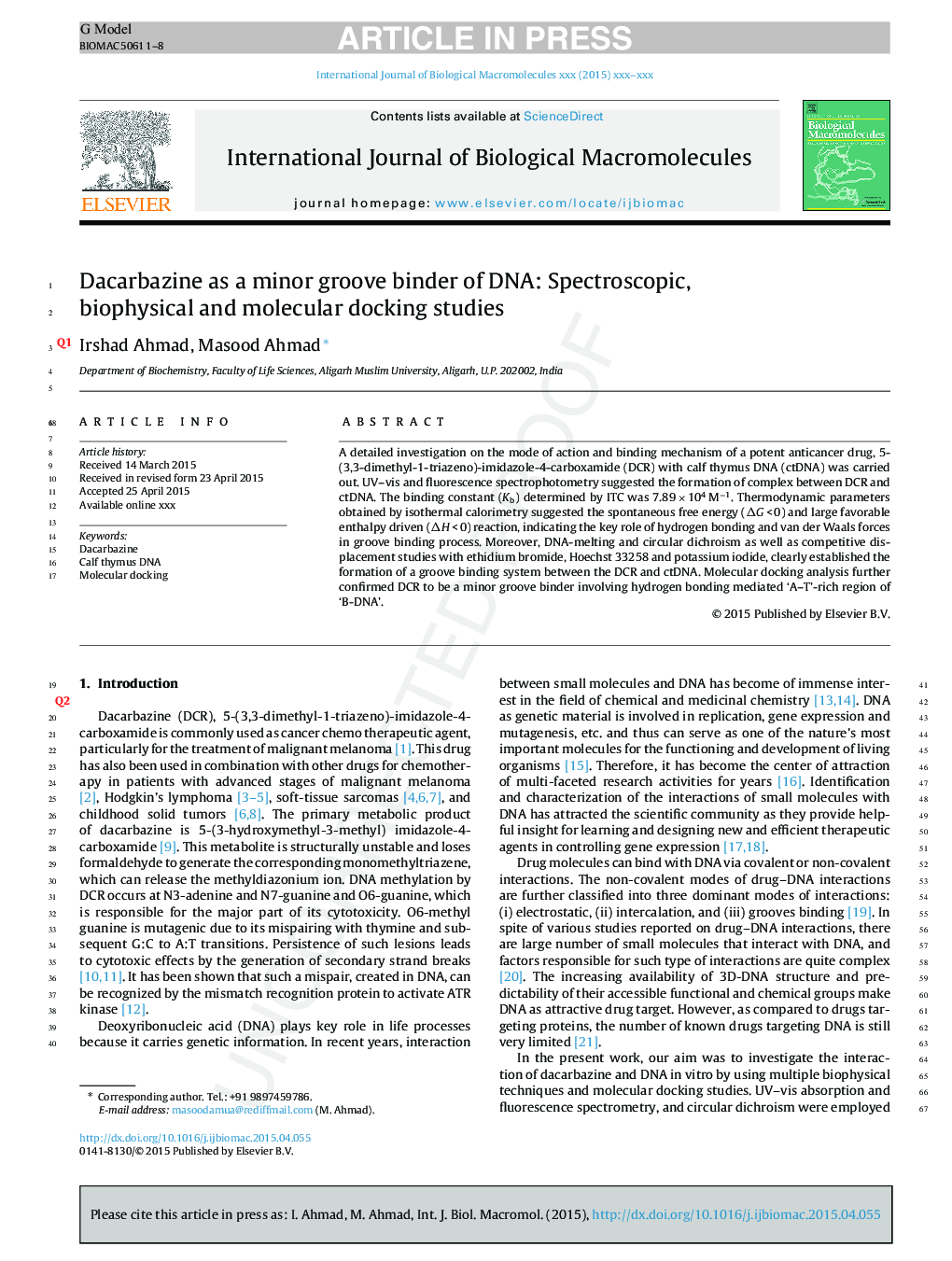| Article ID | Journal | Published Year | Pages | File Type |
|---|---|---|---|---|
| 8330979 | International Journal of Biological Macromolecules | 2015 | 8 Pages |
Abstract
A detailed investigation on the mode of action and binding mechanism of a potent anticancer drug, 5-(3,3-dimethyl-1-triazeno)-imidazole-4-carboxamide (DCR) with calf thymus DNA (ctDNA) was carried out. UV-vis and fluorescence spectrophotometry suggested the formation of complex between DCR and ctDNA. The binding constant (Kb) determined by ITC was 7.89Â ÃÂ 104Â Mâ1. Thermodynamic parameters obtained by isothermal calorimetry suggested the spontaneous free energy (ÎGÂ <Â 0) and large favorable enthalpy driven (ÎHÂ <Â 0) reaction, indicating the key role of hydrogen bonding and van der Waals forces in groove binding process. Moreover, DNA-melting and circular dichroism as well as competitive displacement studies with ethidium bromide, Hoechst 33258 and potassium iodide, clearly established the formation of a groove binding system between the DCR and ctDNA. Molecular docking analysis further confirmed DCR to be a minor groove binder involving hydrogen bonding mediated 'A-T'-rich region of 'B-DNA'.
Related Topics
Life Sciences
Biochemistry, Genetics and Molecular Biology
Biochemistry
Authors
Irshad Ahmad, Masood Ahmad,
